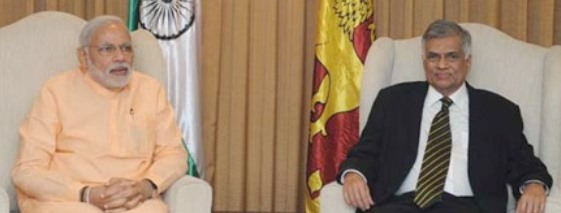Expressing his government’s reservations about allowing Indian professionals into Sri Lanka under any new agreement with the neighbouring country, he told Parliament that his country would not sign any pact similar to the CEPA with India.
He clarified that his government had conveyed to India its opposition against the inclusion of “services” in the proposed pact and the latter too had agreed to this.
He gave this clarification in the light of reported observations of an association of medical officers in the government.
Mr Wickremesinghe, during his visit to India in September, expressed the hope that an agreement on trade and investment apart from technological development would be signed by the middle of 2016. Even then when sections of the media had reported that the CEPA would be signed, the government had denied such reports.
On December 21, an official-level meeting is scheduled to take place in New Delhi to discuss contours of the proposed agreement on economic and technological cooperation.
The CEPA was proposed as a sequel to the India-Sri Lanka Free Trade Agreement (ISLFTA) that was signed in 2000. A dozen rounds of negotiations were held between the two countries but, in 2013, Sri Lanka went on record, saying that the CEPA was no longer required. Sections of the business community in Sri Lanka have expressed reservations over such a pact.
The Ceylon Chamber of Commerce, the 176-year-old body representing the business community, has been urging the country’s policymakers to go beyond the ISLFTA. In a release issued early this year, the Chamber sought to answer critics of the CEPA, saying that the debate on the topic should be based on a “hard-nosed assessment of potential benefits and costs rather than on emotion and primordial fears.”
To substantiate its position, the Chamber pointed out that Indian investment in Sri Lanka had now reached $1 bn. “There is a pipeline of a further $1 bn,” it said.
According to the 2014 Annual Report of the Central Bank of Sri Lanka, the Chamber and the website of the Indian High Commission in Sri Lanka, the value of trade between Sri Lanka and India amounted to over $4.6 billion in 2014, about 15 per cent of Sri Lanka’s total external trade. India continued to be the single largest source of imports, which were put at $ 4,023 million whereas Sri Lankan exports to India amounted to around $ 625 million. During January-August 2015, the bilateral trade amounted to US$ 3.23 billion. Besides, the Indian government has been supporting development projects of around $2.6 billion, of which grants account for $436 million.
